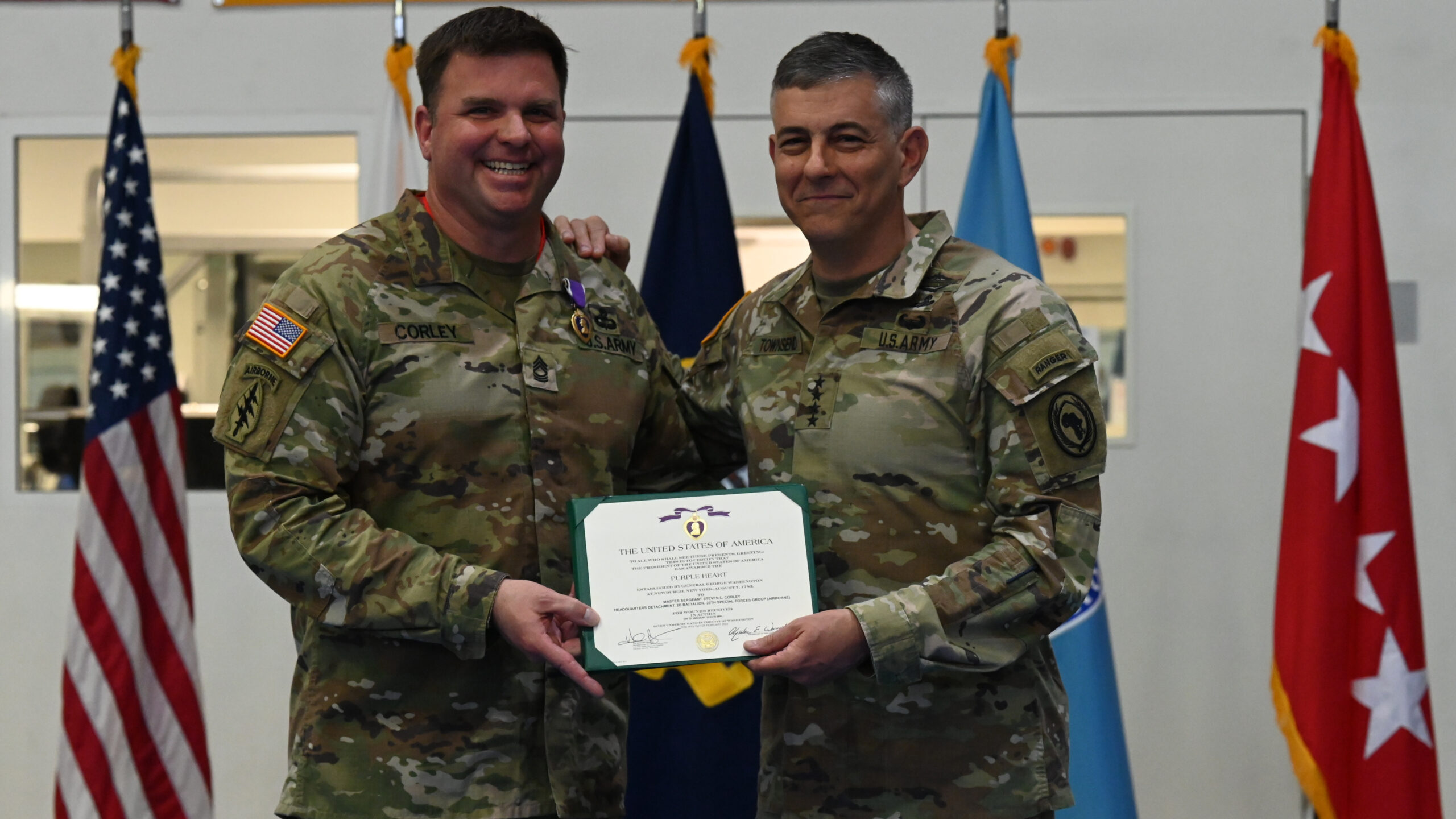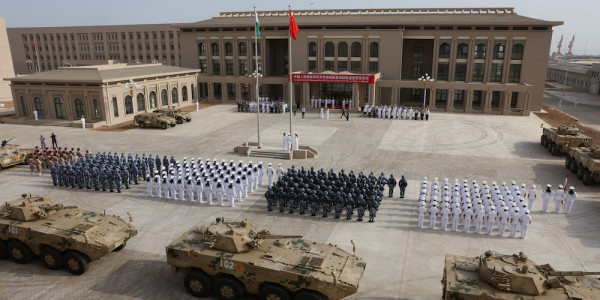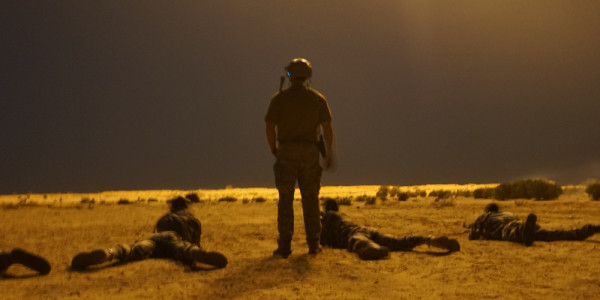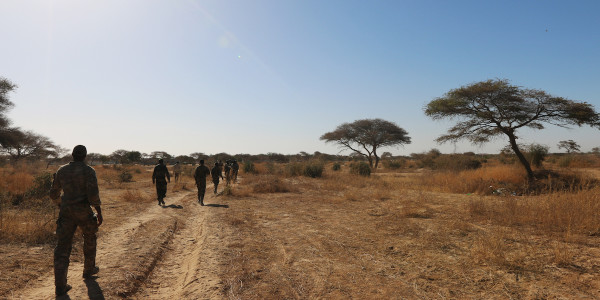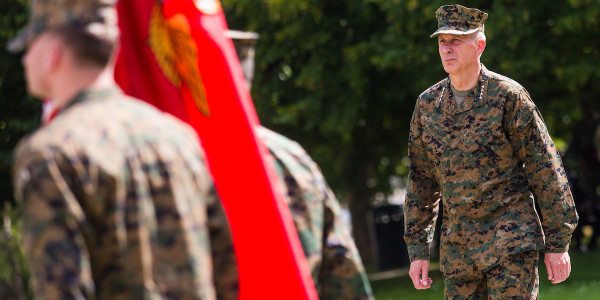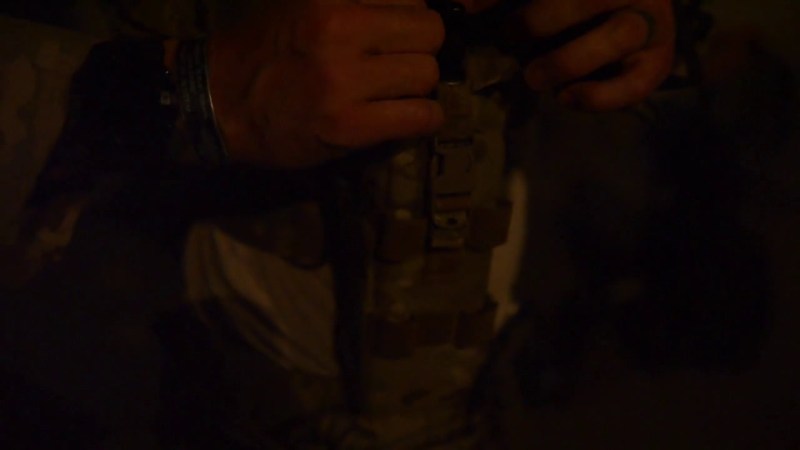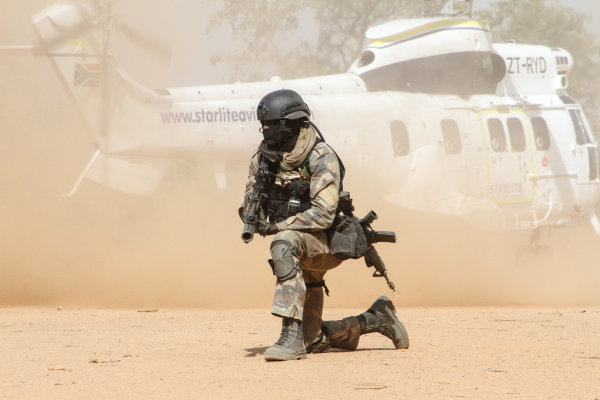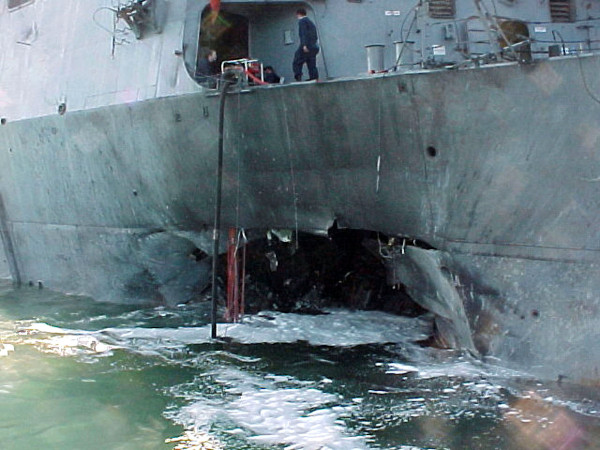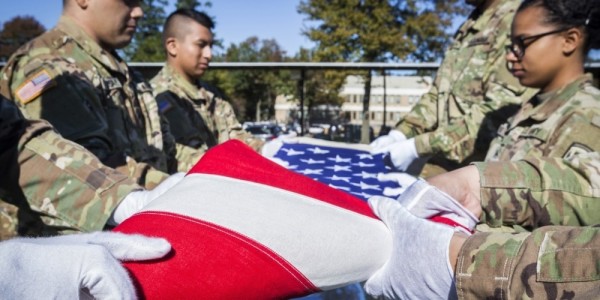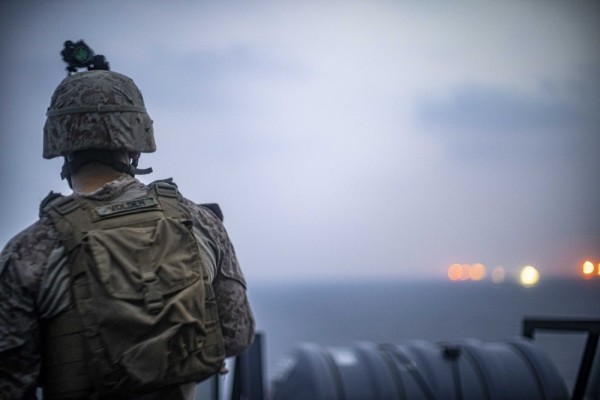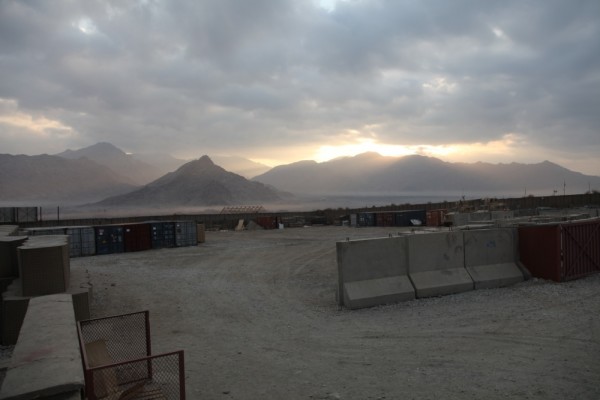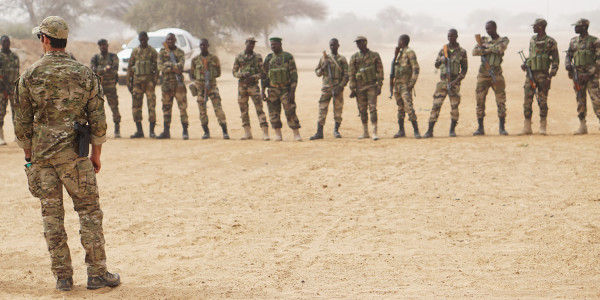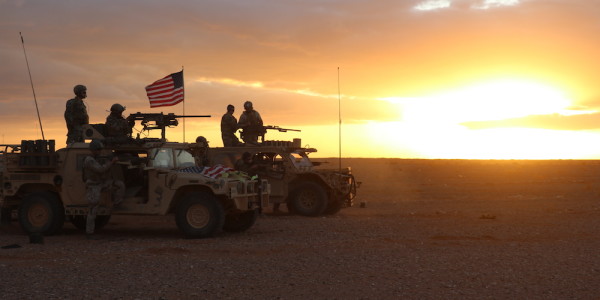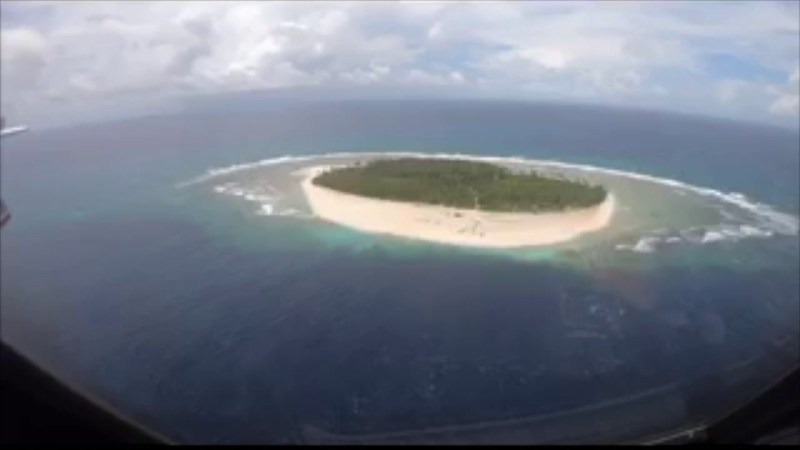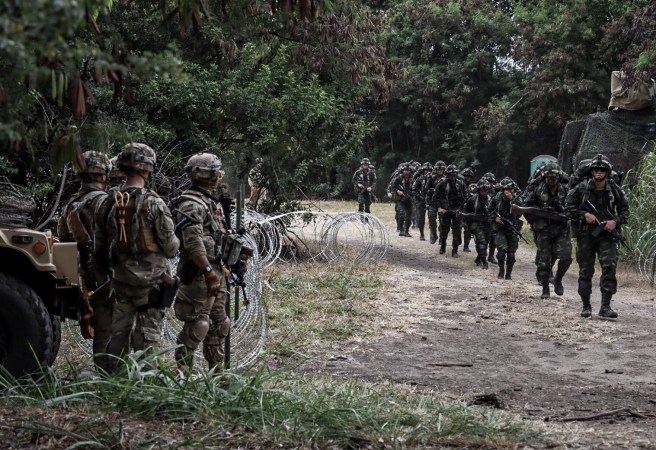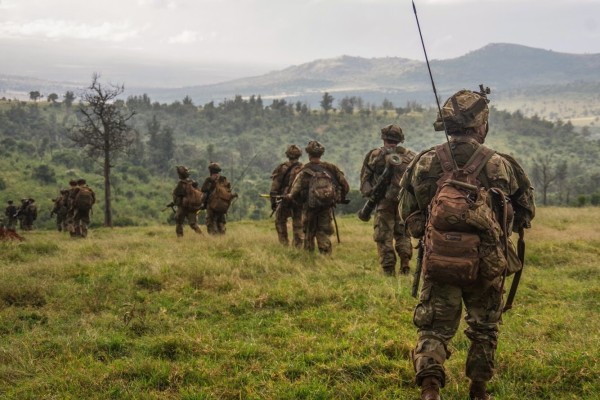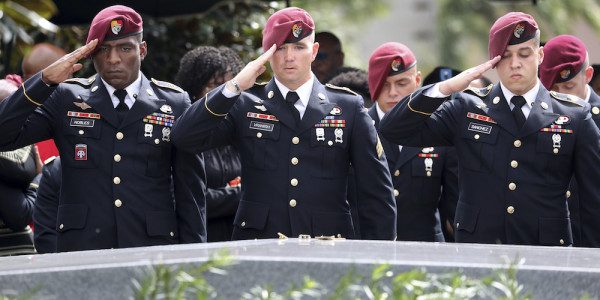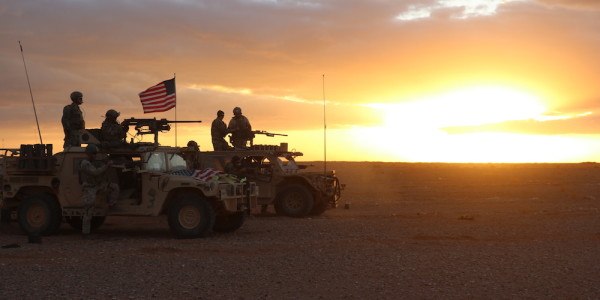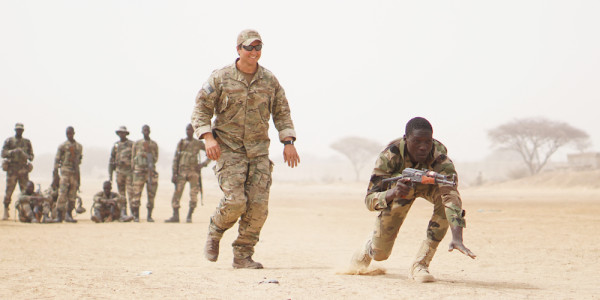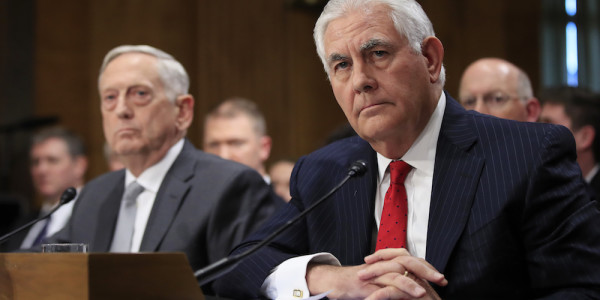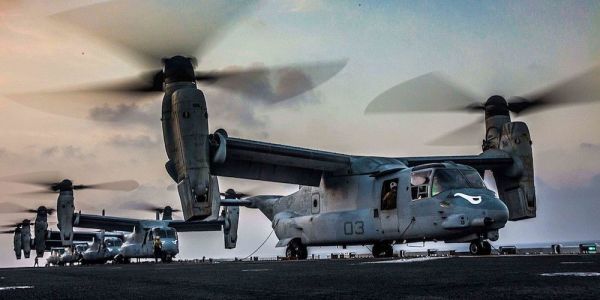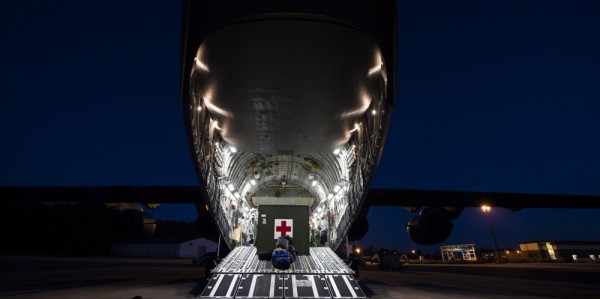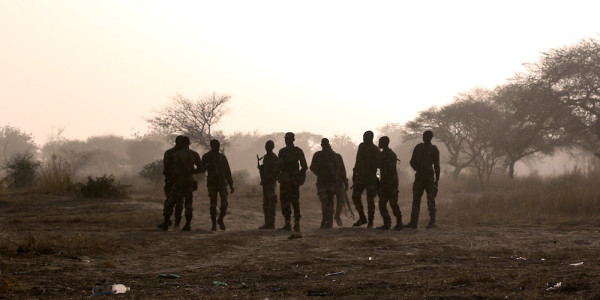Last week, Master Sgt. Steven Corley, an intelligence noncommissioned officer with 2nd Battalion, 20th Special Forces Group (Airborne) was awarded the Purple Heart during a ceremony in Stuttgart, Germany. Corley was wounded in January “while serving as the leader of a six-person team in northwest Africa where he was responsible for intelligence exploitation and integration with partners and allies.”
As Gen. Stephen Townsend, the AFRICOM commander, said during the ceremony on Friday, “Wherever you look in Africa, when it’s somewhere tough or dangerous, SOCAFRICA is there.”
Special Operations Command Africa, to which Corley is assigned, “engages with partner-force militaries on the African continent daily, both in person and virtually,” according to a news release about the award.
If the language sounds vague, perhaps it is meant to be. The Authorization for Use of Military Force, or AUMF, was passed in September 2001, and has been the legal backing for all manner of military deployments meant to counter the then-recent “attacks launched against the United States.” Yet a 2021 study from Brown University found that the Department of Defense has repeatedly conducted operations in Africa without even citing the vague language of the AUMF.
Subscribe to Task & Purpose Today. Get the latest in military news, entertainment, and gear in your inbox daily.
In January, Military Times and the Associated Press reported on a soldier being wounded during a mortar attack on a base near the city of Gao, in Mali, as part of Operation Barkhane, the French-led counter-terrorism mission that began in 2014. It was little remarked upon elsewhere.
According to the Defense Department Manpower Center, there were only 23 U.S. service members in Mali as of December 2021. However, it’s unlikely that those numbers account for special operations deployments that tend to be shorter in length and aren’t typically publicized. There were reportedly around 6,000 American troops, contractors, and civilian personnel in Africa at the end of 2021, many of them at Camp Lemonnier in Djibouti, but also in “unspecified countries.”
While the two-decade-long mission in Afghanistan ended last year, the Global War on Terror continues in Africa. It’s a little-reported upon front. In 2001, there were only nine countries on the continent that had 10 or more American military personnel deployed to them. Now that number has tripled. According to The Intercept, there were 29 bases in 15 countries and territories in 2019, to go along with at least 36 named operations
In October 2017, four soldiers were killed during an ambush near the Niger-Mali border. It garnered attention more for the aftermath. In September 2019, soldiers from the New Jersey National Guard were awarded the Combat Infantry Badge and Combat Action Badge for engaging in southern Somalia. In January 2020, an attack by the Somali-based al-Shabaab terrorist group on a base at Manda Bay, Kenya, left three service members dead.
Yet there remains little reporting or awareness that there are still thousands of personnel deployed to Africa, and still periodically engaged in combat across the continent.
Master Sgt. Corley enlisted in September 2001, and has since deployed six times — three tours in Afghanistan, one in Lebanon, and two with Special Operations Command Africa. More than two decades later, soldiers like Corley are still being awarded the Purple Heart.
It’s a subtle reminder that, even if it only appears in award citations, the War on Terror isn’t over.
What’s new on Task & Purpose
- ‘Red Dawn’ hits Ukraine after destroyed Russian armor gets tagged with ‘Wolverines’
- Marine Corps fires commander and sergeant major of Hawaii infantry battalion
- Inside the Air Force’s secret mission to lift half a ton of enriched uranium out of Kazakhstan
- Airmen are pissed that an entire C-17 crew except for the maintainer received a Distinguished Flying Cross
- This Army sniper team just outshot 29 other elite teams from around the globe
Want to write for Task & Purpose? Click here. Or check out the latest stories on our homepage.

